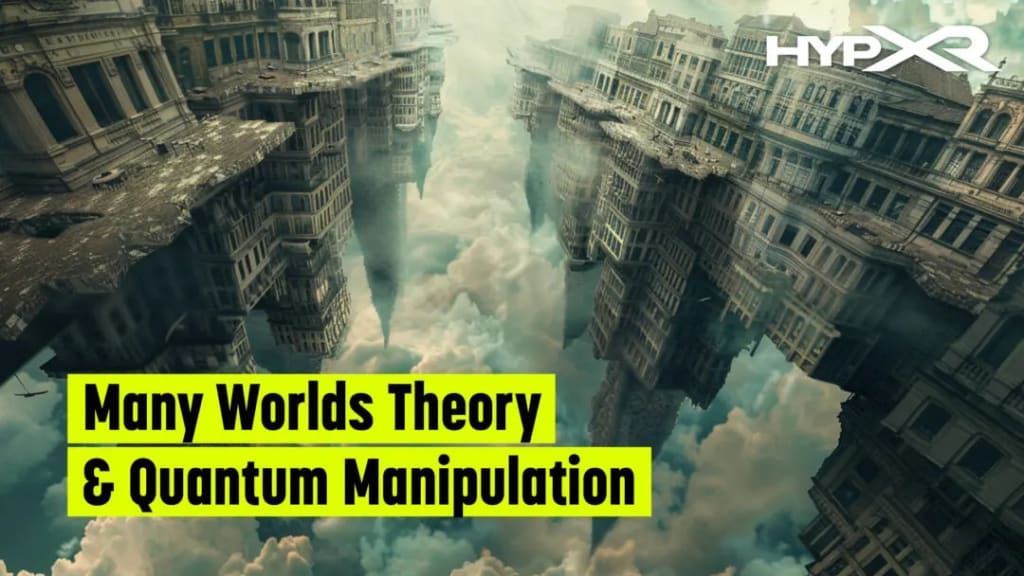
Background - Many worlds theory of Quantum Mechanics:-
Since this continues to come up, and I've given it some thought, let me try again to explain what's currently going on with the Many Worlds theory of quantum mechanics, and why it's the most basic game in town.
What's The Problem...?
The core issue is the topic of superposition and measurement, which drove individuals like Erwin Schrodinger and Einstein away from quantum physics despite their crucial contribution to developing the theory that we all know and love.
Quantum physics is concerned with probability, not assurance, and the mathematical wavefunctions we calculate within the framework of this theory will include sections expressing several possible outcomes right up until the moment of measurement. Nonetheless, we experience just one reality, with each measurement yielding only one result.
This is an example of Schrodinger's infamous experiment with a cat. In a 1935 paper that acted as a sort of departing shot on his way out to investigate other issues, he proposed an "absurd" scenario featuring a cat confined in a box with a gadget with a 50% probability of killing the cat within the next hour. He asked, "What is the condition of the cat at the final moment of that hour, shortly before you open the box?"
Common sense would seem to imply that the cat is either dead or alive, meanwhile, a quantum-mechanical wavefunction representing the circumstance would have an equal mixing of both "alive" and "dead" states simultaneously.
To Schrodinger and many other conventionally minded physicists, the existence of a cat in such a superposition is patently ludicrous. Nonetheless, he pointed out that this is why we are obliged to accept it when it comes to photons, electrons, and atoms. There must be a way to move from the quantum condition to a single everyday reality, and they saw the lack of a satisfying solution as a fatal defect in quantum physics.
Many metaphorical worlds:-
This solves the issue of needing a secret collapse mechanism, but it comes at the expense of carrying around many extra copies of ourselves and our test subjects. That seems like an issue because we don't notice those things. When I take my kids to the playground, they don't bump into many other versions of themselves as they slide down.
We can only experience one reality at a time. There is a basic reason, and that vision is inextricably linked to the outcome we see. This is a strange concept, so Everett along with others (particularly Bryce DeWitt) devised a metaphor to help clarify things, as is customary in physics. And, as is so often the case, the metaphor created an entirely new line of confusion.
The metaphor is based on the interpretation's common name, the Many Worlds theory of quantum mechanics. That is, the theory is that the many branches of the global wave function that produce the various results are functionally separate universes.
As soon as you don't take it too seriously, it conveys the main notion correctly. The problem is that people take it too seriously, resulting in a slew of misunderstandings and complaints about things that aren't truly the Many Worlds theory of quantum mechanics.
For example, you may encounter the argument that it's all rubbish because each tiny measurement necessitates the construction of a whole new universe's worth of material. In truth, all it truly implies is that one universe's worth of material already exists in an increasing superposition state; nothing new is created through measurement; existence simply becomes more complex.
Discovering Other Universes:-
To understand what I mean, we need a specific example of how one may go about detecting the existence of the extra branches of the wave function, which metaphorically translates into "other universes." Fortunately, this is what we do all the time in physics, via the interferometry technique, which is at the heart of the greatest clocks and motion sensors available today.
The simplest example of this technique is a "Mach-Zehnder interferometer," as seen above. A ray of light (or an electron, an atom, or any other quantum particle) strikes a beamsplitter, which has a fifty per cent probability of sending the light on one of two perpendicular routes. Each of these goes to a mirror, which reroutes the light to a second beamsplitter with a fifty per cent chance of transmitting it to either Sensor A or Sensor B. Then you assess how much light hits each of your sensors.
The mathematical reason for this phenomenon is the way, we estimate distributions of probability from wavefunctions. A photon's wave function as it passes through the interferometer is divided into two components, one for path 1 and one for path 2. The probability distribution is obtained by putting these together and then squaring the wave function. It produces the interference effect. So, in some ways, this is a method for detecting the specific extra wavefunction branches that form the "other universes" of the Many Worlds theory of quantum mechanics.
About the Creator
Rise Tv
Our mission is to entertain, uplift, and unite humanity as we guide humanity towards a bright, new day through trending topics, mysterious phenomena, & investigative research.






Comments (1)
Your tenacity is truly remarkable. Keep pushing through any obstacles in your path.